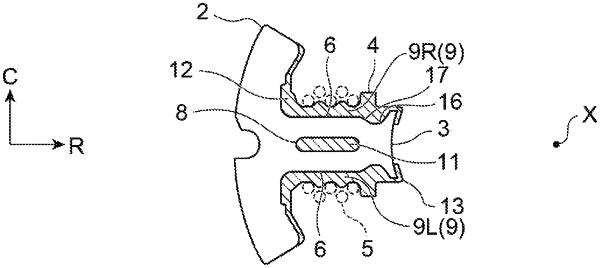| CPC H02K 3/522 (2013.01) [H02K 2203/12 (2013.01)] | 20 Claims |

|
1. A stator comprising:
a stator core having an annular shape in which a plurality of teeth protrude in a radial direction from an inner peripheral surface of the stator core and are arranged in a circumferential direction;
an insulator that covers the teeth; and
a winding wound around the teeth with the insulator interposed between the winding and the teeth,
wherein each of the teeth comprises:
a pair of long side surfaces extending in a direction along a central axis of the stator core;
a pair of short side surfaces adjacent to the long side surfaces and extending in a direction intersecting the central axis; and
a through-hole portion penetrating through the teeth from one short side surface to the other short side surface,
wherein the insulator comprises:
a pair of long side surface-covering portions that cover the pair of respective long side surfaces;
a pair of short side surface-covering portions that cover the pair of respective short side surfaces; and
a through-hole filling portion with which the through-hole portion is filled,
wherein the long side surface-covering portions and the short side surface-covering portions adjacent to each other are integrated with each other,
wherein the pair of short side surface-covering portions are integrated with each other through the through-hole filling portion,
wherein each of the long side surface-covering portions comprises an opening portion that is open while exposing a respective long side surface, and
wherein a thermally conductive substance that is more thermally conductive than the insulator is provided on a portion of the long side surface exposed by the opening portion.
|